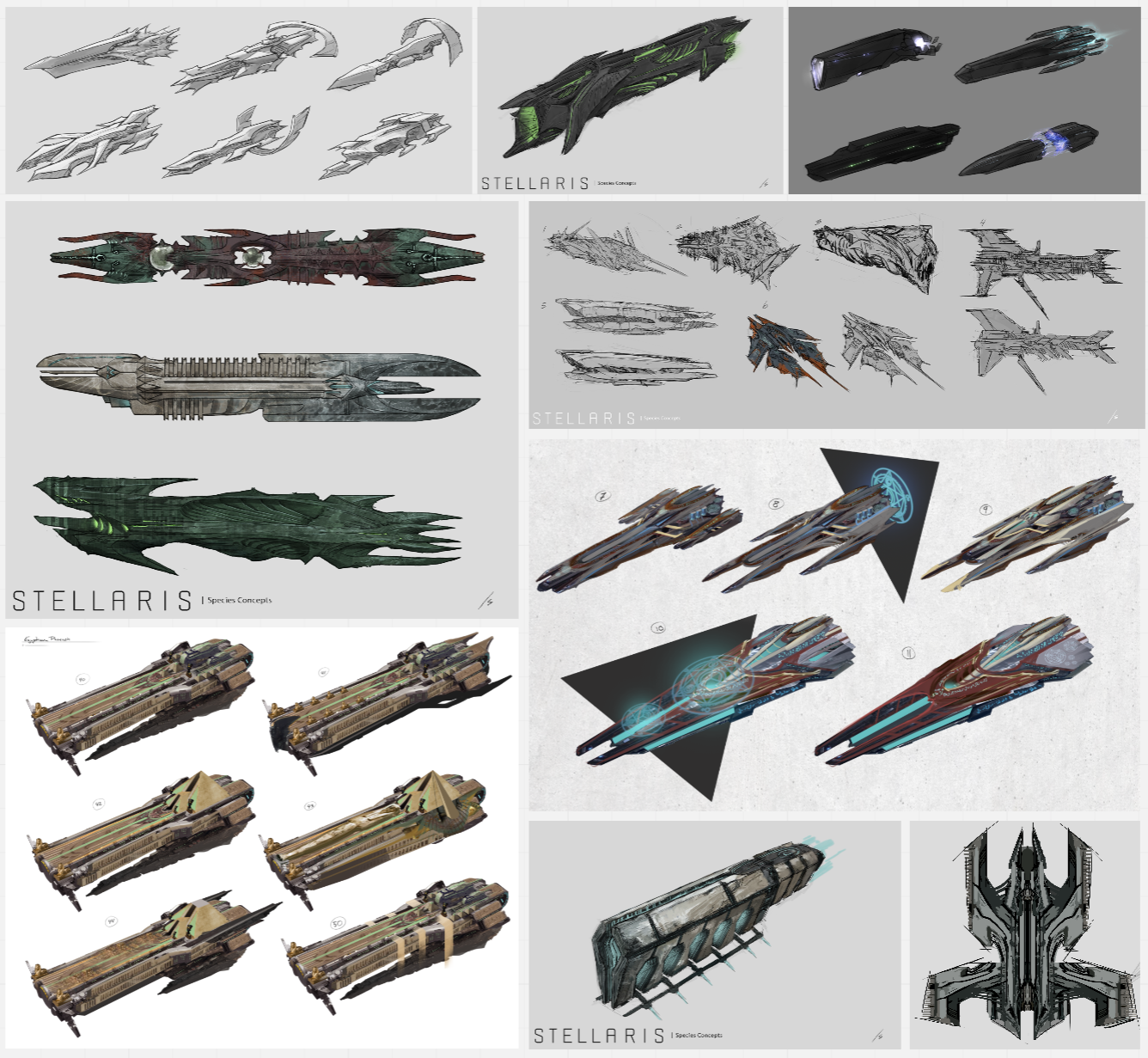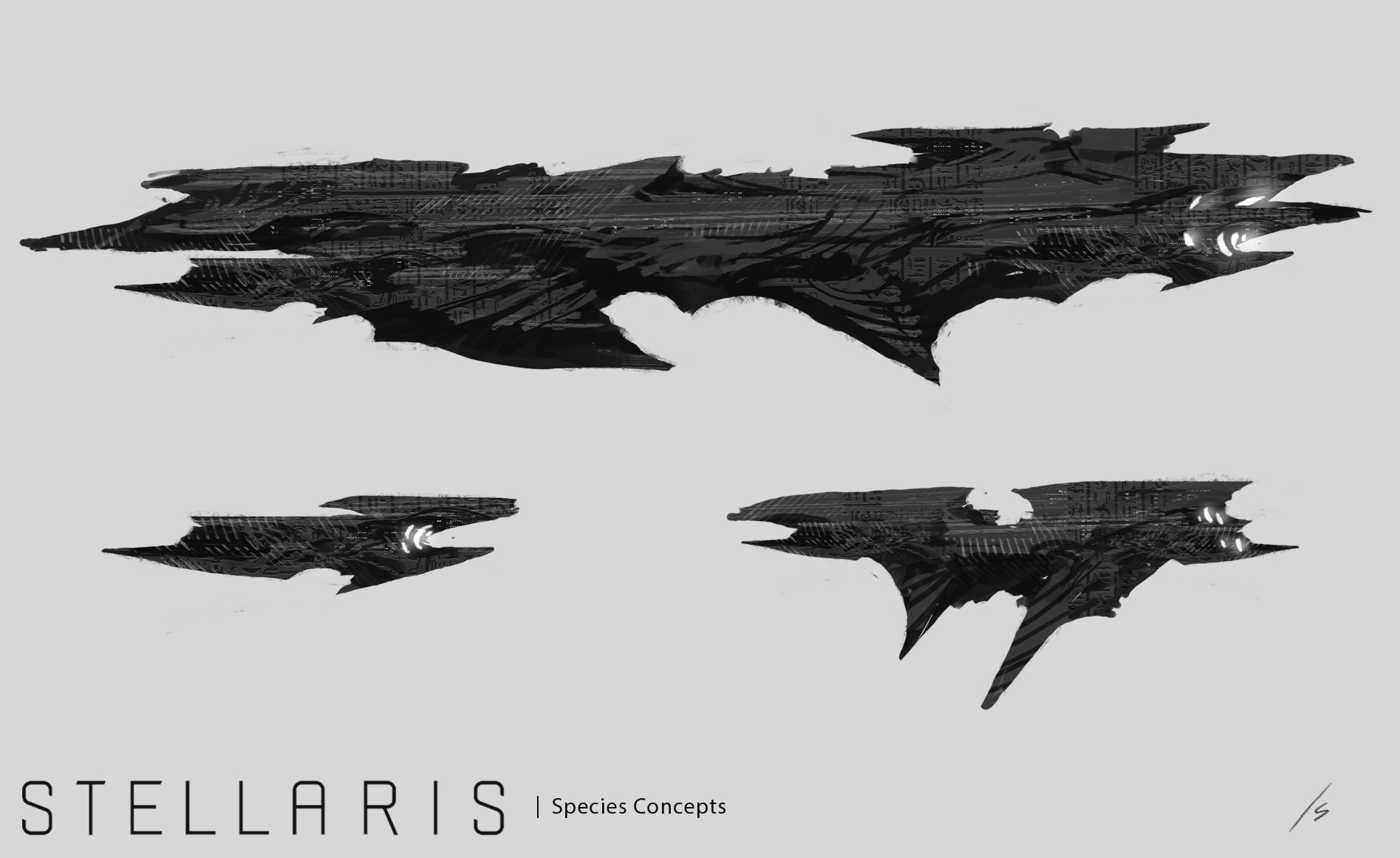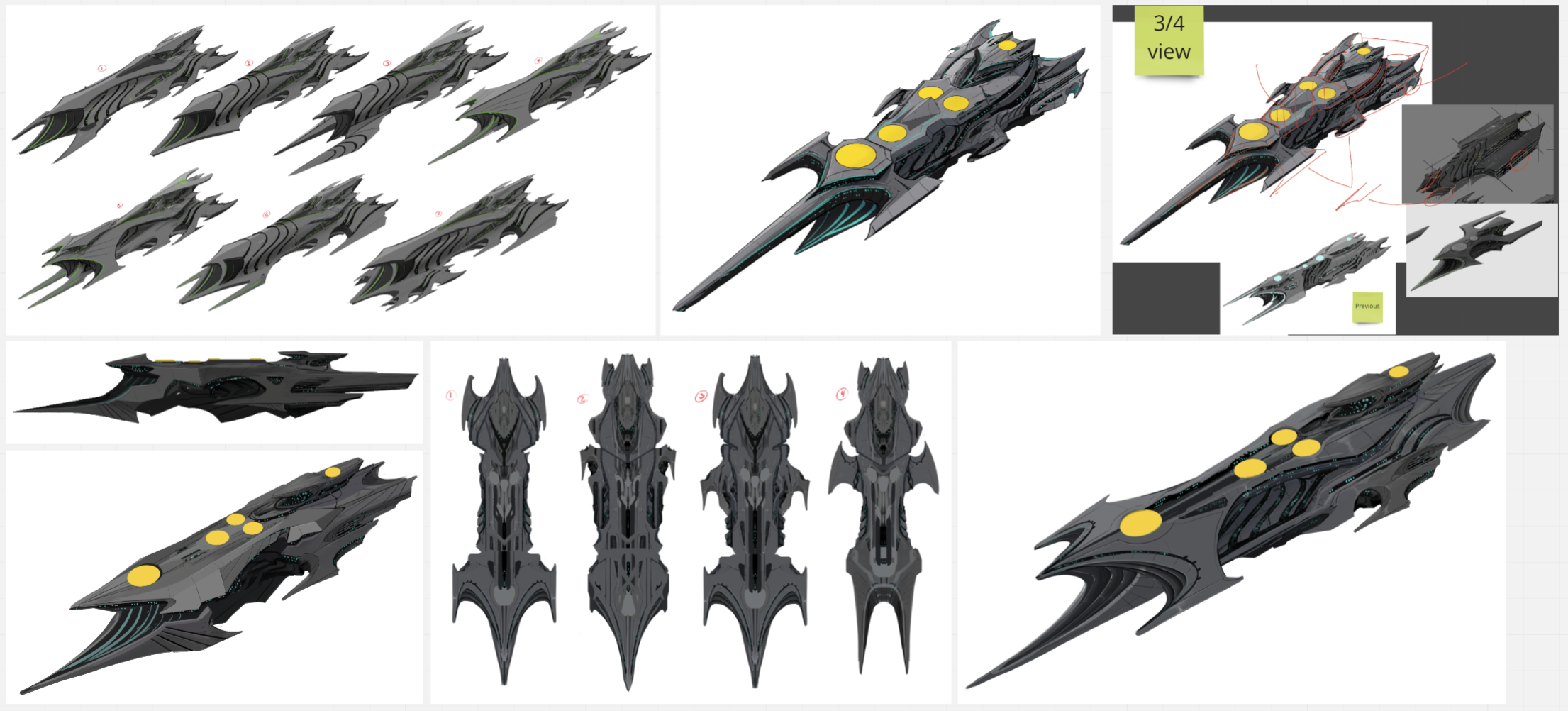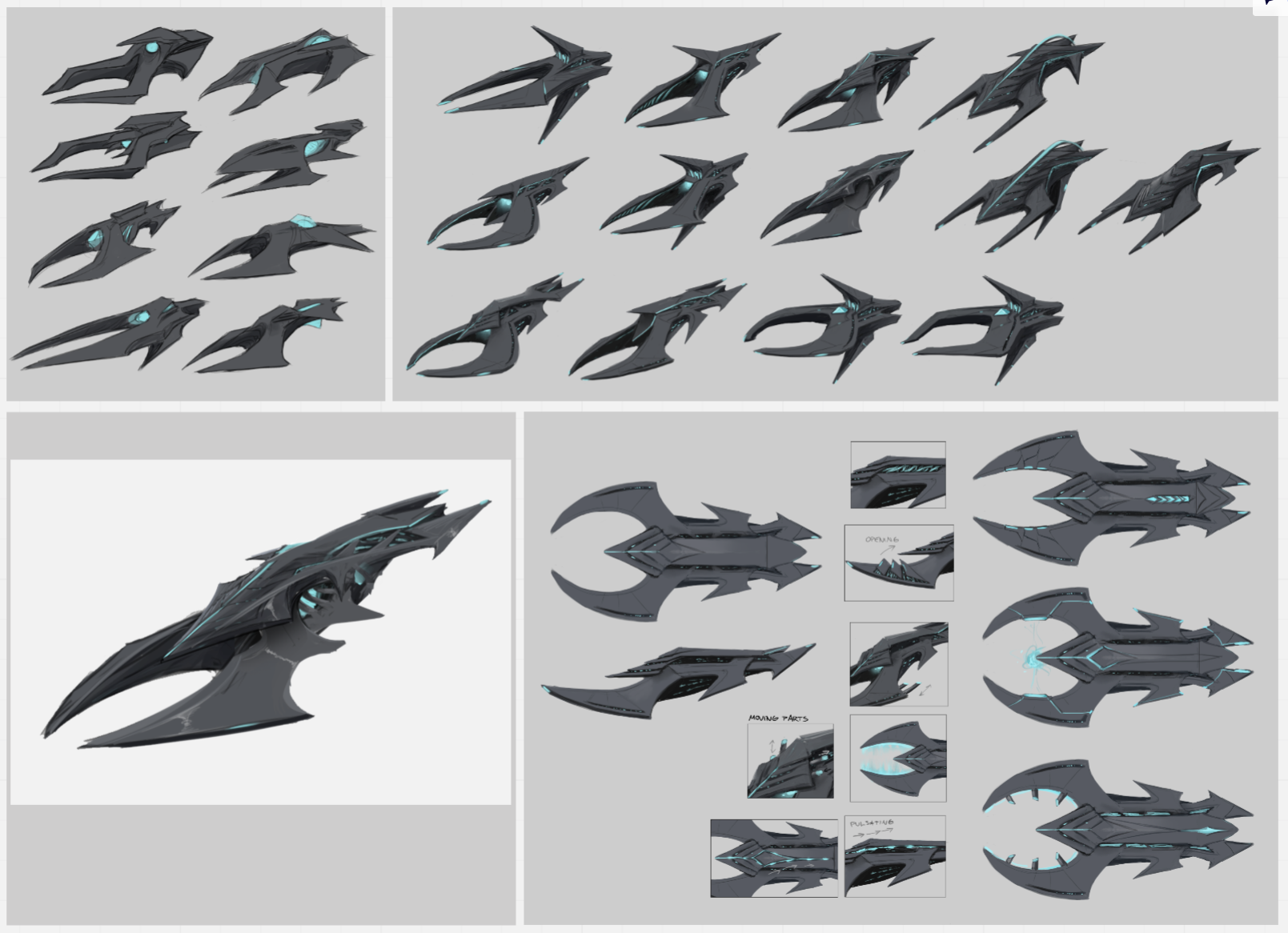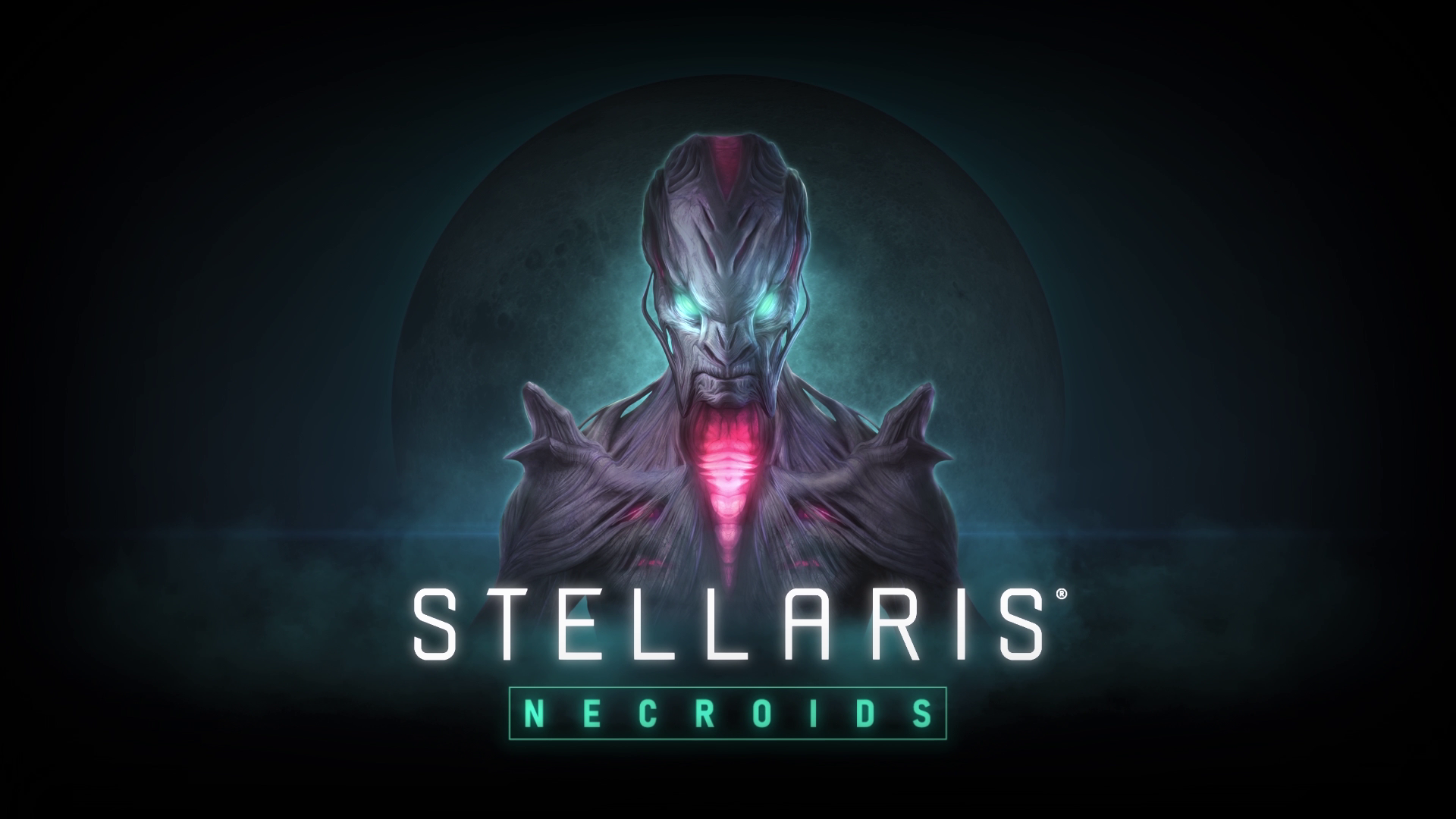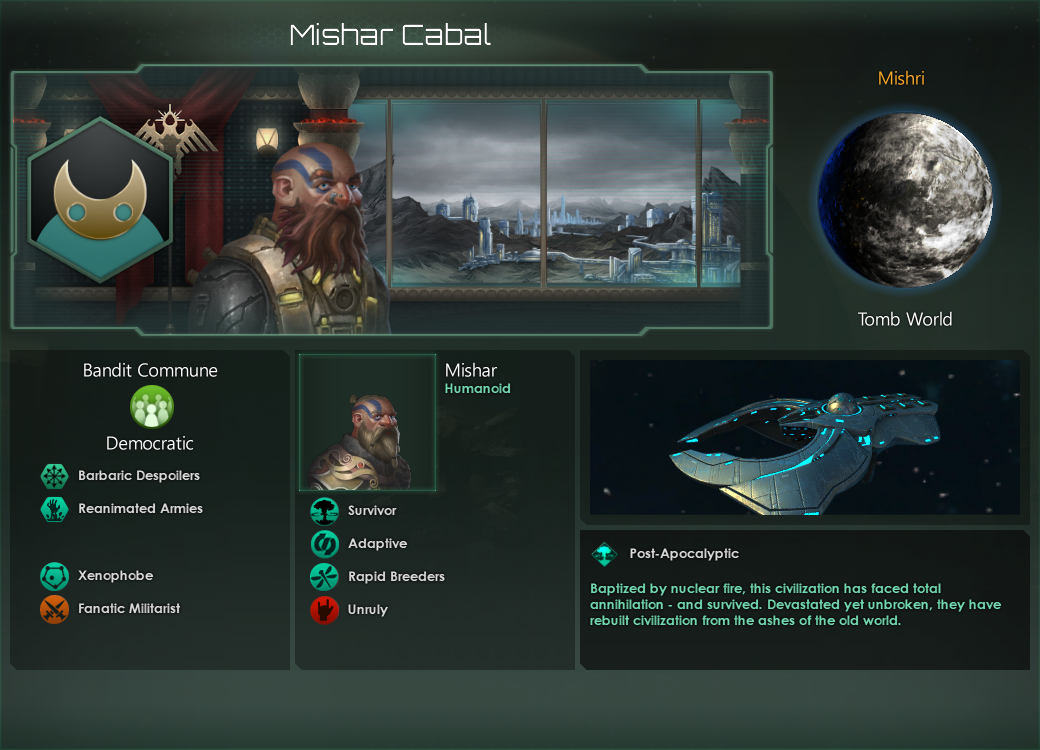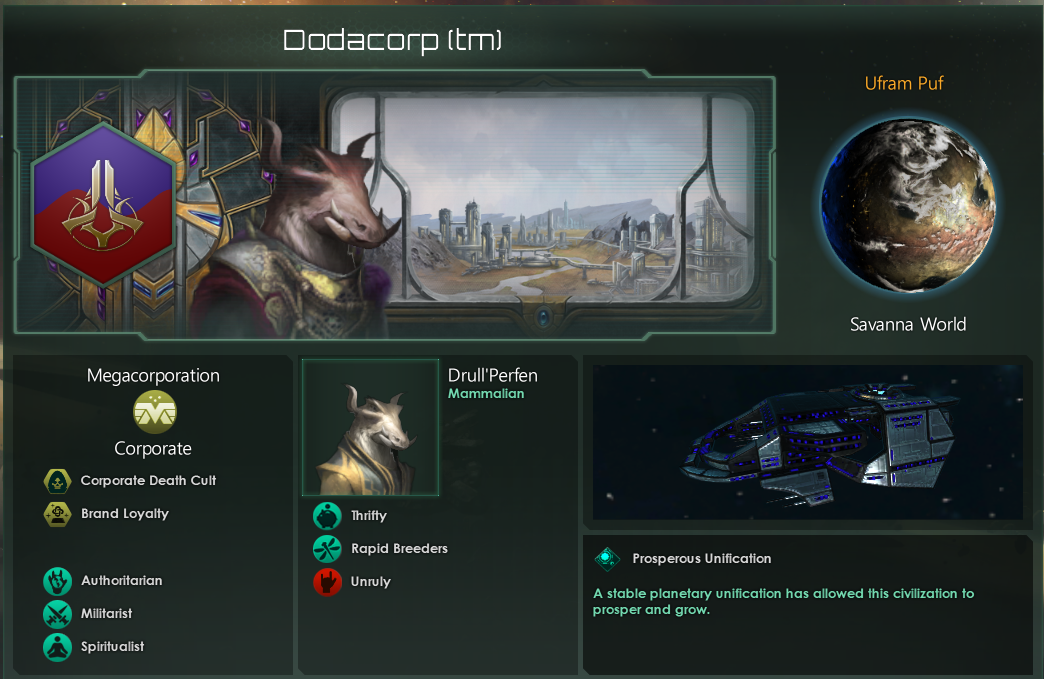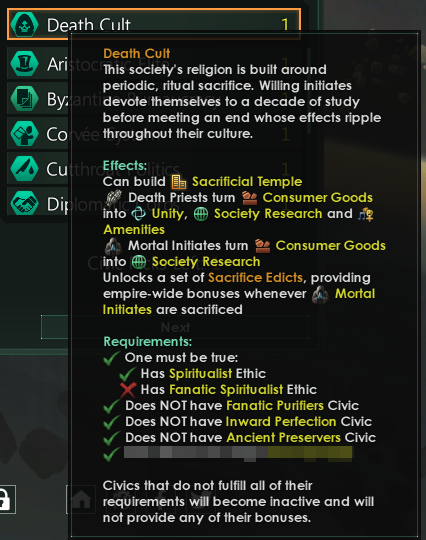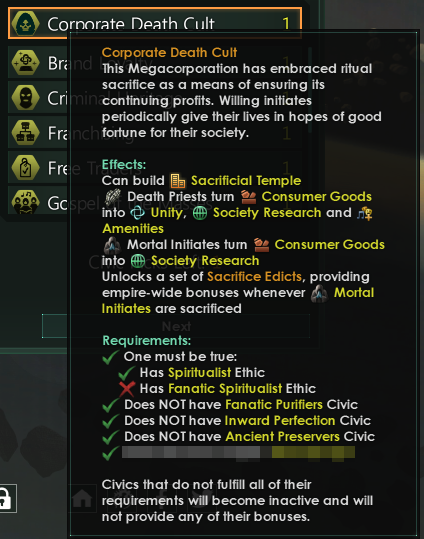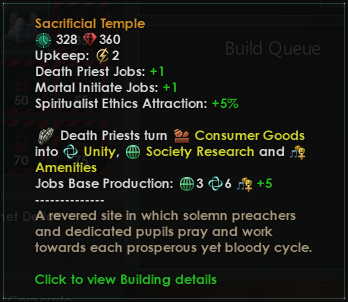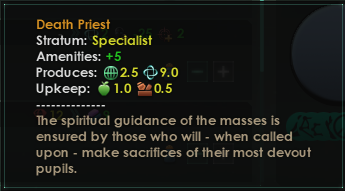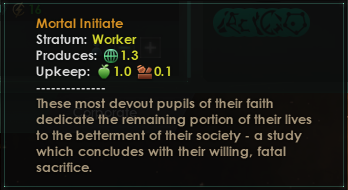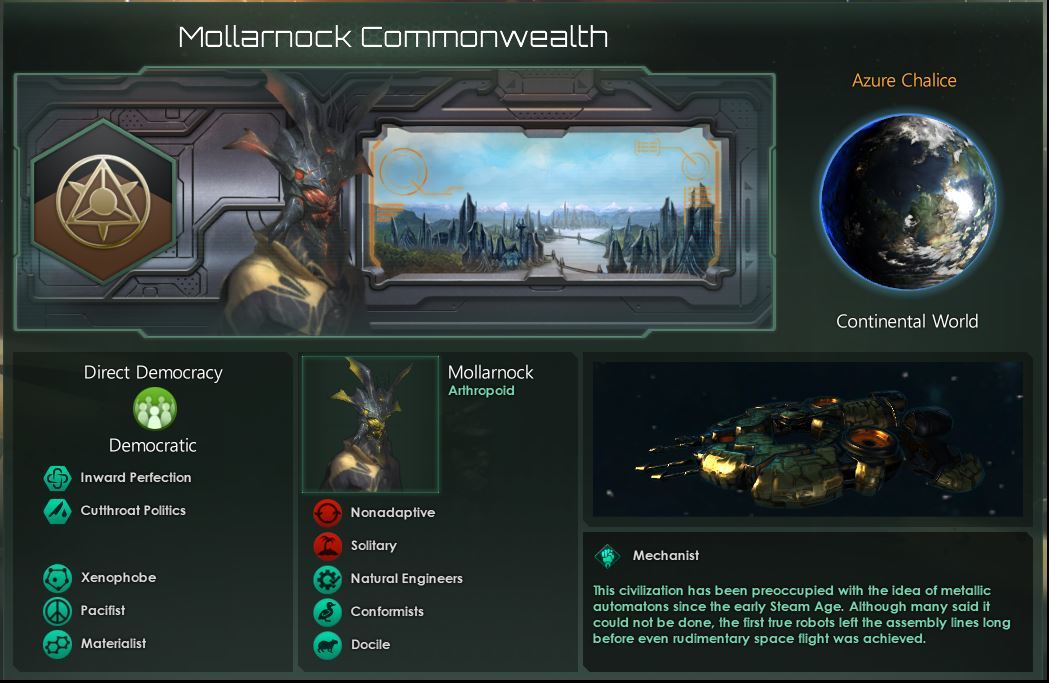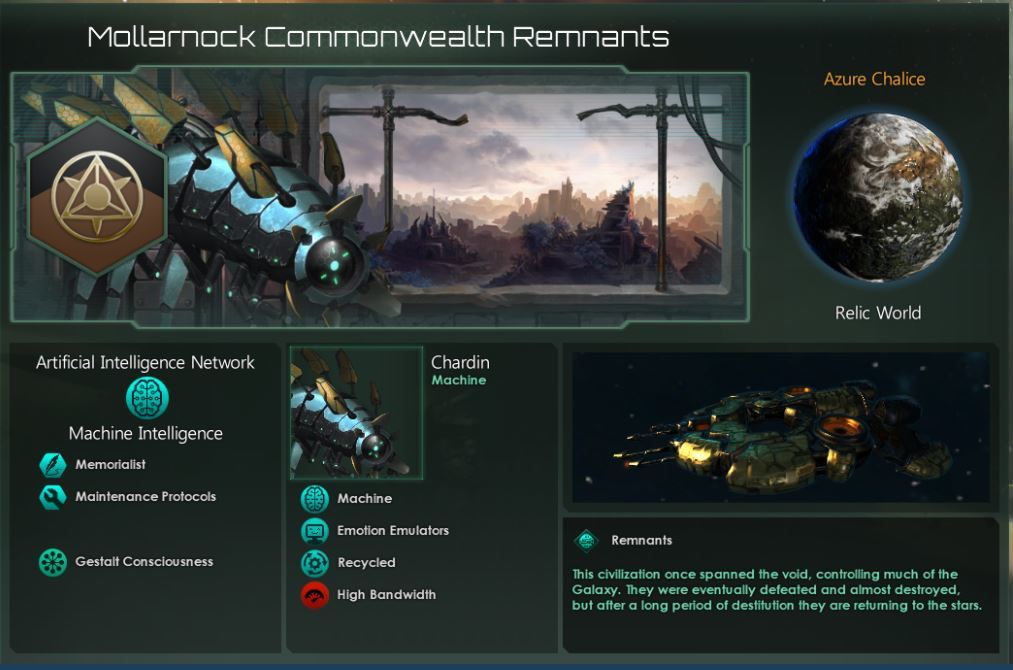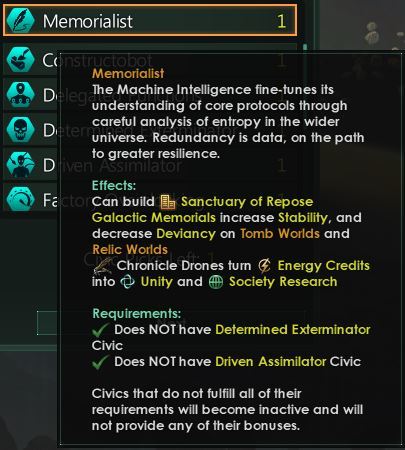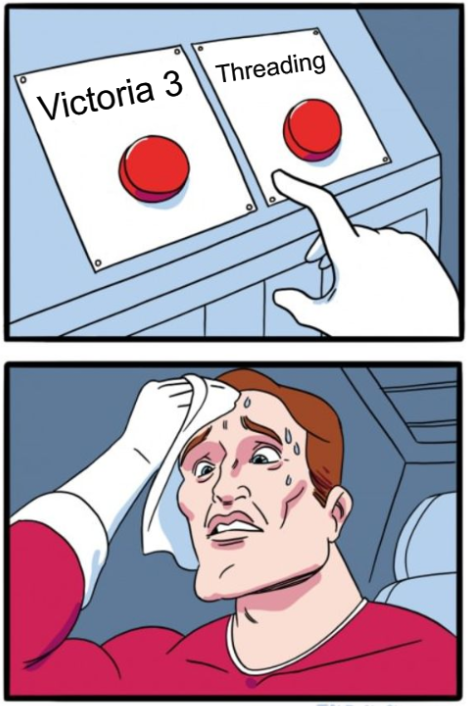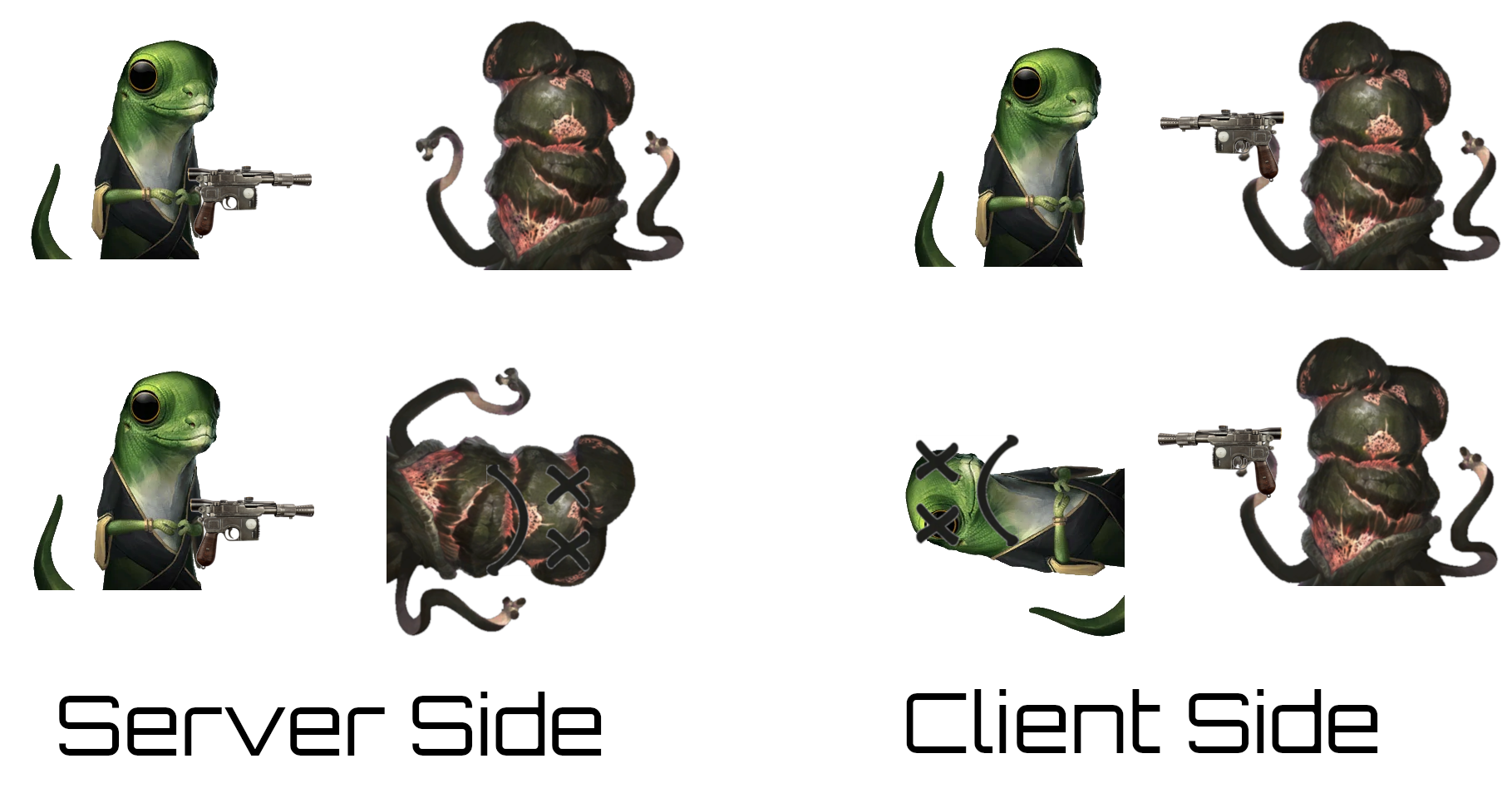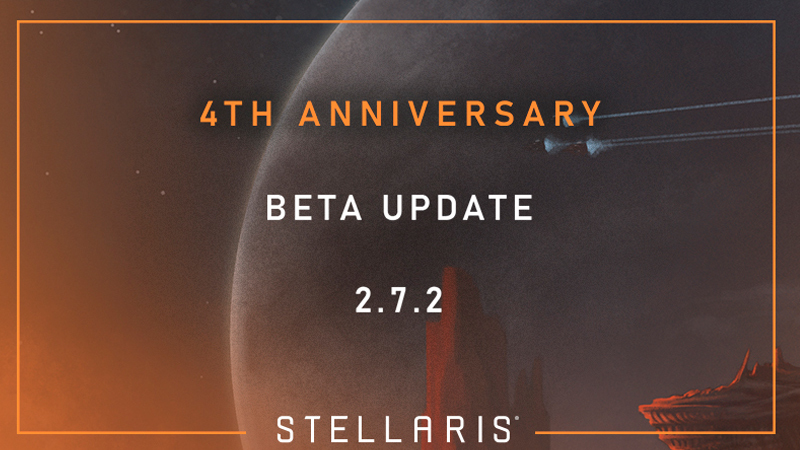
Oct 8, 2020
Stellaris - ann-charlotte.mork
Zaztl’s time had come. The Ritual of Elevation was soon to begin, and as she was inching ever closer to her own final destiny, she wondered “Is this perhaps the start of a new life?”. She couldn’t help but to latch on to hope in her moment of dread, but she also knew the futility of the question.
No Jeferian would ever know the answer to that question.
Shumon ins-Beth was born, the newest individual to join the Pasharti species.
---------------
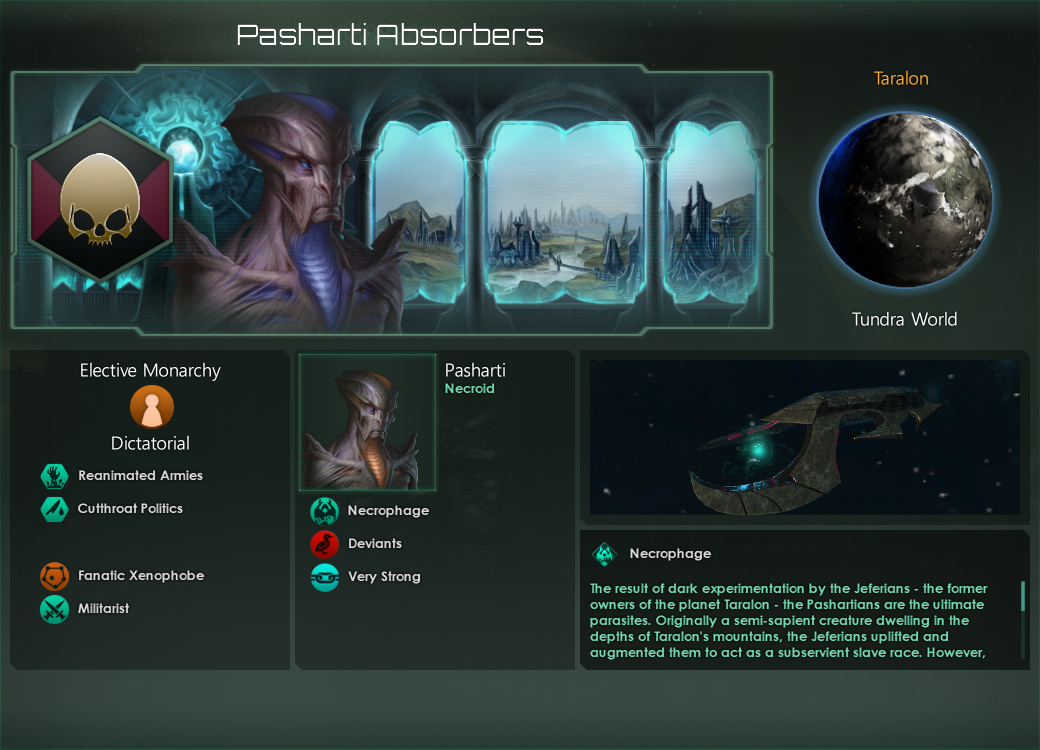
The result of dark experimentation by the Jeferians - the former owners of the planet Taralon - the Pashartians are the ultimate parasites. Originally a semi-sapient creature dwelling in the depths of Taralon's mountains, the Jeferians uplifted and augmented them to act as a subservient slave race. However, their uplifting was rather too effective, and they unleashed a monster. Horrified at the capabilities of their creation - which included the ability to absorb other sentient species and turn them into Pashartians - the Jeferians tried to shut down the experiment. However, a small group of uplifted Pashartians escaped.
Over the years, they bided their time, managing not only to evade capture, but also gradually increase their numbers and develop a technological base to rival the Jeferians. Eventually, the Jeferians noticed that something was amiss, but by then they were powerless to resist.
Soon the Pashartians had seized control of the planet, unleashing violent pogroms on their erstwhile oppressors - all the while further increasing their numbers. Now poised to take to the stars, the Pashartians stand ready to pursue what they see as their solemn duty - the conversion of all lesser life forms to their likeness.
---------------
Hello everyone!
Two weeks ago we announced the Necroids Species Pack, and today we’ll be giving you more information about the gameplay aspects. But first, I’ll take the opportunity to link the trailer once again, in case you missed it.
https://www.youtube.com/watch?v=q0WbgYFvb5I&feature=emb_title
For Necroids we wanted to add some new gameplay that would be available to many more different types of empires and species. Unlike Lithoids, these Civics and Origins will not require you to use a Necroid portrait. For Lithoids we felt like it made sense, but in this case we didn’t want to impose any limitations on your imagination and creativity.
Necroids gameplay includes:
[/list]
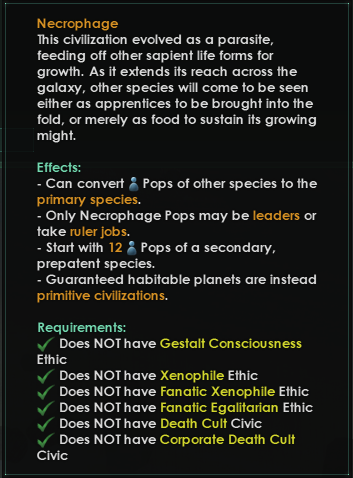
Necrophage is a new Origin that means that your primary species has a very hard time to procreate by themselves, but is instead dependent on transforming other Pops into themselves.
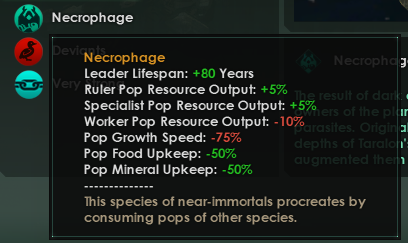
Necrophage Trait - live long and consume
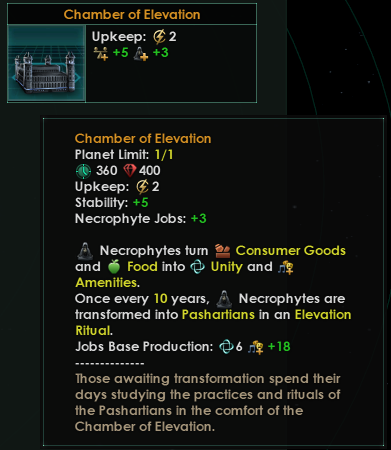
Chamber of Elevation - when regular Uplifting isn’t enough

Necrophytes - Hey, what does the necro part of my job title stand for anyway?
---
In addition, there is also the Reanimated Armies civic that we showed in DD #185. This civic replaces the Military Academy with a Dread Encampment, and can recruit Undead Armies that are unaffected by morale.
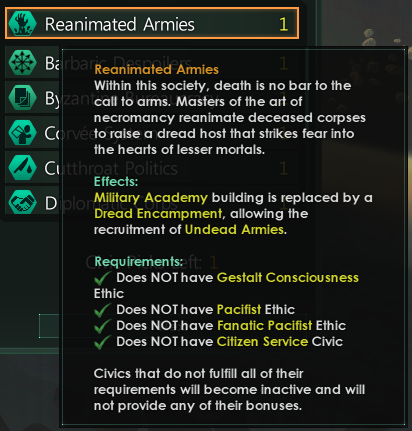
Reanimated Armies - the ultimate in recycling.
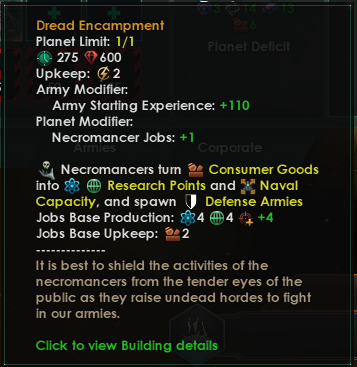
Dread Encampment Building - wouldn’t want to get caught dead here
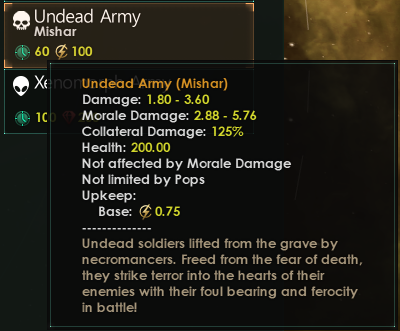
Undead Army - it’s not wight how they work them to the bone, but they don’t complain
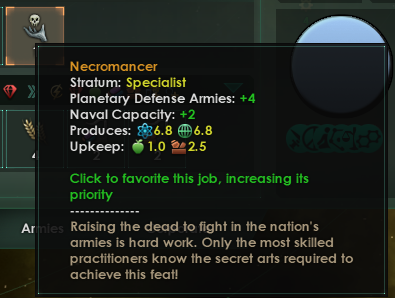
Necromancer job - some say it’s a dead end job, but they’ve made a grave mistake
(Note: Above image includes the bonus from Ground Defense Planning)
This civic has a few restrictions - no pacifists, and it conflicts with Citizen Service since it replaces the Military Academy. Some subtle differences exist between Soldiers granted by Military Academies and the Necromancers from Dread Encampments - they’re Specialist tier and provide more defense armies, provide some research benefits, and will summon additional defense armies under Martial Law instead of increasing Stability.
---
That is all for this week! Next week we’ll take a look at the art process and all the effort that goes into creating the Necroid portraits!
We’ll be eagerly reading your responses, and remember that...
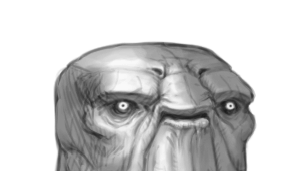
Jeff sees all
No Jeferian would ever know the answer to that question.
Shumon ins-Beth was born, the newest individual to join the Pasharti species.
---------------

The result of dark experimentation by the Jeferians - the former owners of the planet Taralon - the Pashartians are the ultimate parasites. Originally a semi-sapient creature dwelling in the depths of Taralon's mountains, the Jeferians uplifted and augmented them to act as a subservient slave race. However, their uplifting was rather too effective, and they unleashed a monster. Horrified at the capabilities of their creation - which included the ability to absorb other sentient species and turn them into Pashartians - the Jeferians tried to shut down the experiment. However, a small group of uplifted Pashartians escaped.
Over the years, they bided their time, managing not only to evade capture, but also gradually increase their numbers and develop a technological base to rival the Jeferians. Eventually, the Jeferians noticed that something was amiss, but by then they were powerless to resist.
Soon the Pashartians had seized control of the planet, unleashing violent pogroms on their erstwhile oppressors - all the while further increasing their numbers. Now poised to take to the stars, the Pashartians stand ready to pursue what they see as their solemn duty - the conversion of all lesser life forms to their likeness.
---------------
Hello everyone!
Two weeks ago we announced the Necroids Species Pack, and today we’ll be giving you more information about the gameplay aspects. But first, I’ll take the opportunity to link the trailer once again, in case you missed it.
https://www.youtube.com/watch?v=q0WbgYFvb5I&feature=emb_title
For Necroids we wanted to add some new gameplay that would be available to many more different types of empires and species. Unlike Lithoids, these Civics and Origins will not require you to use a Necroid portrait. For Lithoids we felt like it made sense, but in this case we didn’t want to impose any limitations on your imagination and creativity.
Necroids gameplay includes:
- Necrophage (Origin)
- Memorialist (Civic)
- Death Cult (Civic)
- Reanimated Armies (Civic)
[/list]

Necrophage is a new Origin that means that your primary species has a very hard time to procreate by themselves, but is instead dependent on transforming other Pops into themselves.

Necrophage Trait - live long and consume

Chamber of Elevation - when regular Uplifting isn’t enough

Necrophytes - Hey, what does the necro part of my job title stand for anyway?
---
In addition, there is also the Reanimated Armies civic that we showed in DD #185. This civic replaces the Military Academy with a Dread Encampment, and can recruit Undead Armies that are unaffected by morale.

Reanimated Armies - the ultimate in recycling.

Dread Encampment Building - wouldn’t want to get caught dead here

Undead Army - it’s not wight how they work them to the bone, but they don’t complain

Necromancer job - some say it’s a dead end job, but they’ve made a grave mistake
(Note: Above image includes the bonus from Ground Defense Planning)
This civic has a few restrictions - no pacifists, and it conflicts with Citizen Service since it replaces the Military Academy. Some subtle differences exist between Soldiers granted by Military Academies and the Necromancers from Dread Encampments - they’re Specialist tier and provide more defense armies, provide some research benefits, and will summon additional defense armies under Martial Law instead of increasing Stability.
---
That is all for this week! Next week we’ll take a look at the art process and all the effort that goes into creating the Necroid portraits!
We’ll be eagerly reading your responses, and remember that...

Jeff sees all




